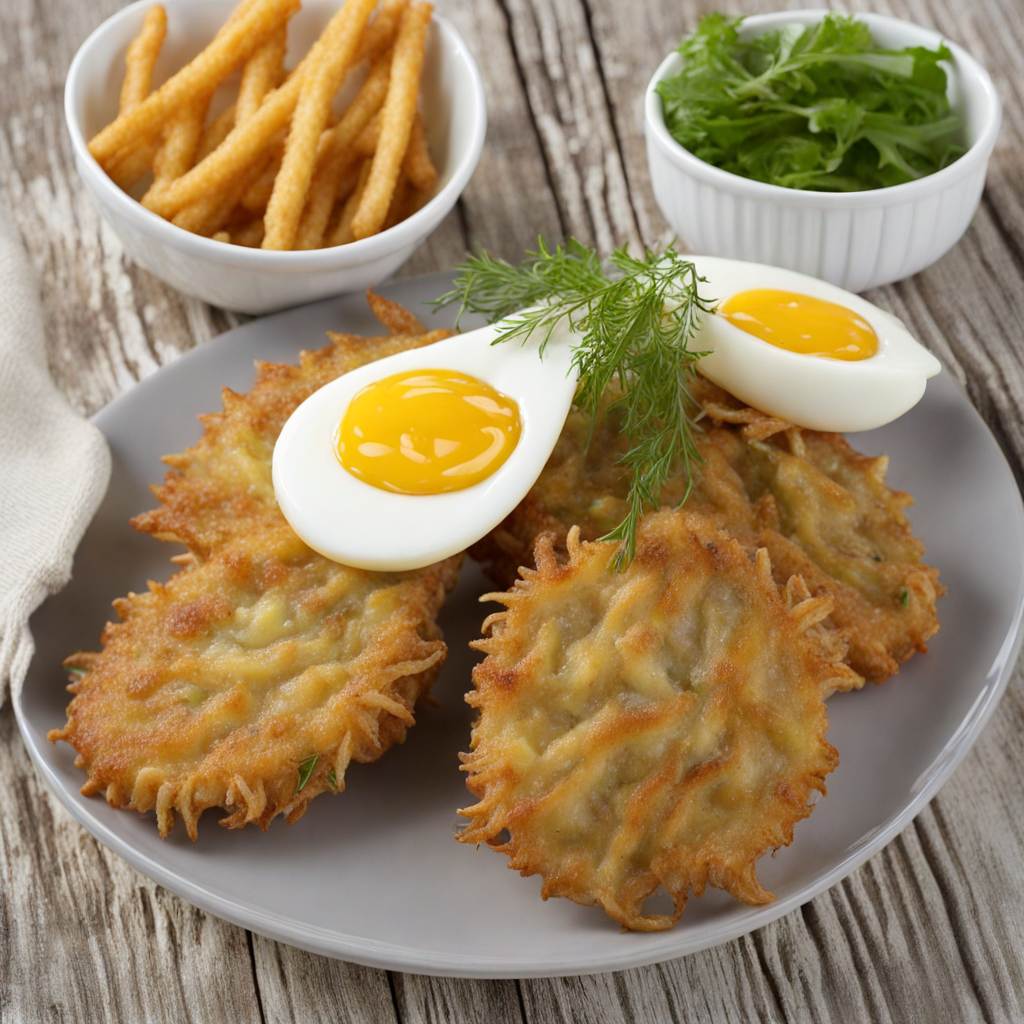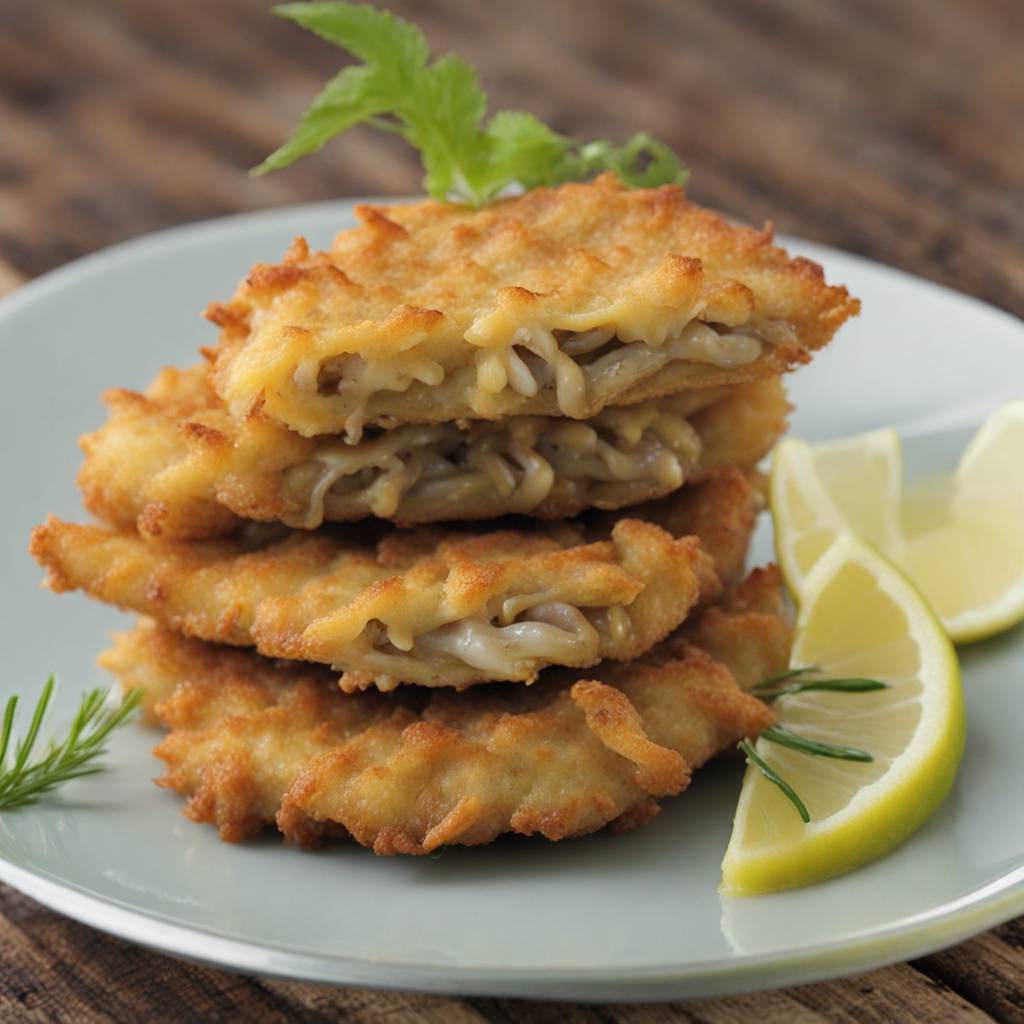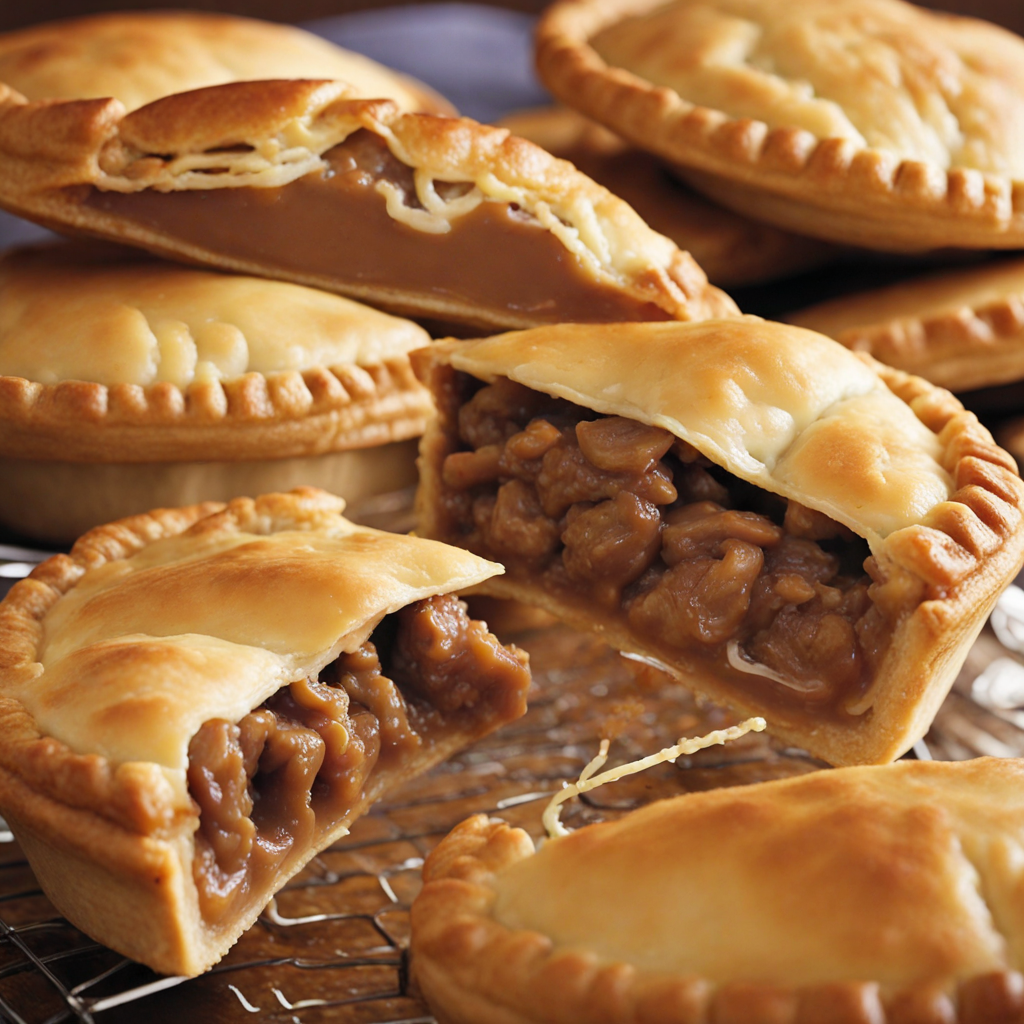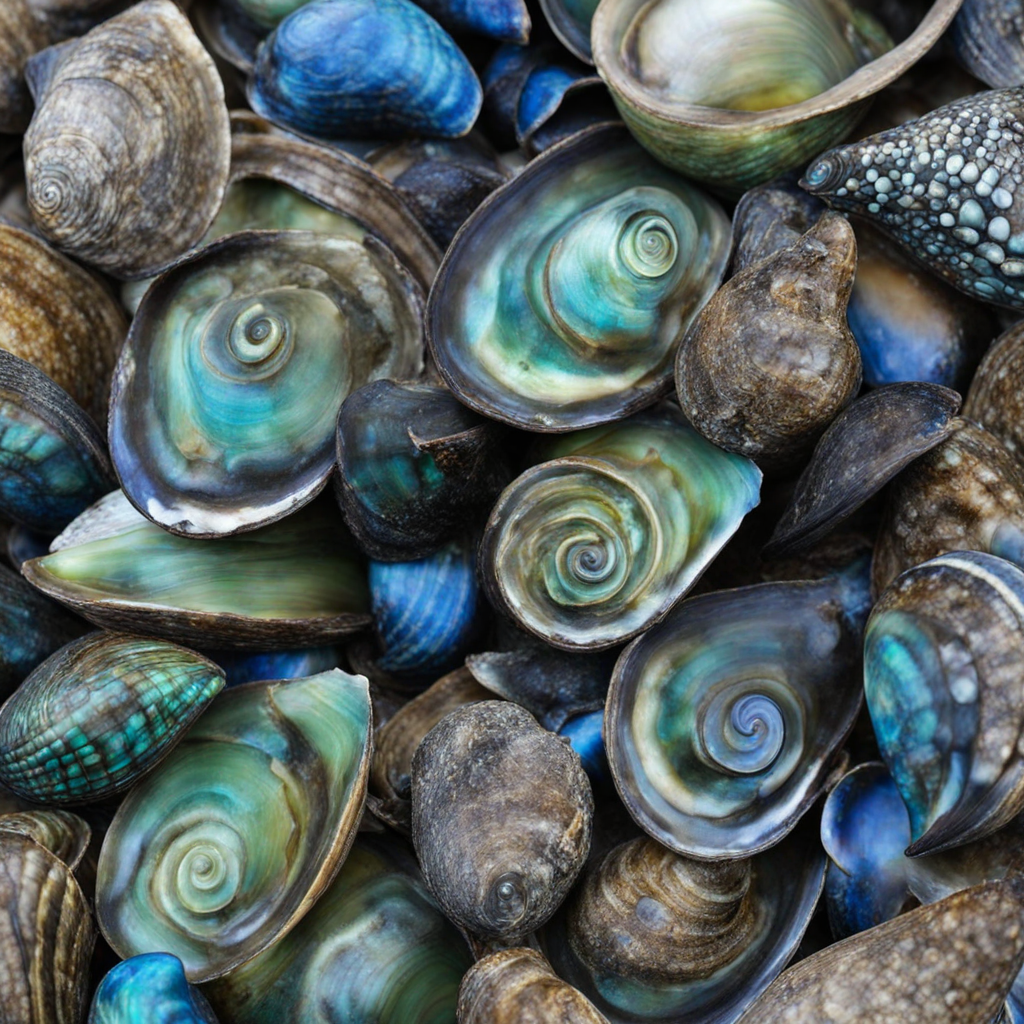Whitebait Fritter
Whitebait fritters are a beloved delicacy in New Zealand, showcasing the country’s rich coastal waters and vibrant culinary traditions. These fritters are primarily made from tiny, translucent fish known as whitebait, which are typically caught during the season from September to November. The fish, often a mix of species like the juvenile stages of native eels, herring, and smelt, are prized for their delicate flavor and tender texture. When lightly battered and fried, they transform into crispy morsels that encapsulate the essence of the ocean with each bite. To prepare whitebait fritters, the fish are usually mixed with a simple batter of flour, eggs, and sometimes milk or water, creating a light and airy consistency that enhances the fresh flavor of the fish. Seasoned with salt and pepper, the mixture is then spooned into hot oil, where it sizzles and puffs up, forming a golden-brown crust. The fritters are often served hot, either as a standalone dish or alongside a fresh salad, providing a satisfying contrast between the crispy exterior and the tender, succulent whitebait inside. Enjoying whitebait fritters is not just about the taste; it’s an experience steeped in New Zealand’s culture. Often served with a squeeze of lemon or a dollop of tartare sauce, they are a popular choice in seaside towns and during seasonal festivals. The unique combination of flavors and textures makes whitebait fritters a must-try for anyone wishing to explore authentic New Zealand cuisine, celebrating the simplicity of fresh ingredients and traditional cooking methods.
How It Became This Dish
The History of Whitebait Fritter in New Zealand Whitebait fritters, a beloved culinary delight in New Zealand, hold a special place in the nation’s gastronomic heritage. These delicate, savory morsels are made primarily from freshly caught whitebait—small, juvenile fish that typically belong to various species, including the inanga (Galaxias maculatus), which is particularly sought after. The fritters are not just a dish; they embody the essence of New Zealand’s coastal culture, reflecting a rich tapestry of indigenous traditions and European influences that have evolved over the centuries. Origins of Whitebait in New Zealand The story of whitebait fritters is deeply intertwined with the history of New Zealand's indigenous Māori people, who have been the guardians of the land and its resources for centuries. Māori have long relied on the bounty of rivers and coastal waters for sustenance, and whitebait was historically an important seasonal catch. The practice of fishing for whitebait, particularly during the spring months when the fish migrate upriver to spawn, is a tradition that has been passed down through generations. Traditional Māori methods of catching whitebait involved the use of nets and traps known as "putangitangi." These traps were often made from natural materials and were strategically placed in shallow waters to maximize catches. Whitebait was not only a food source but also held cultural significance, symbolizing the connection between the people and the land. The fish were often prepared simply, with minimal seasoning, to highlight their delicate flavor. European Influence and the Evolution of the Dish With the arrival of European settlers in the 19th century, the culinary landscape of New Zealand began to shift. The introduction of new cooking techniques and ingredients led to a fusion of Māori and European food traditions. The whitebait fritter, as we know it today, emerged during this period, showcasing a blend of Māori resourcefulness and European culinary flair. The first recorded recipes for whitebait fritters appeared in cookbooks in the late 19th and early 20th centuries. These early iterations often included flour, eggs, and a pinch of salt, creating a simple batter that would encase the delicate fish. The fritters could be shallow-fried or pan-fried, resulting in a crispy exterior that contrasted beautifully with the tender, soft fish inside. The dish quickly gained popularity among both Māori and Pākehā (New Zealanders of European descent) as a seasonal delicacy. As the 20th century progressed, whitebait fritters became a staple in New Zealand homes, particularly in coastal regions where whitebait fishing was plentiful. The dish was commonly served as an appetizer or light meal, often accompanied by a squeeze of lemon or a dollop of tartar sauce. Families cherished the ritual of gathering for whitebait fritter feasts, celebrating the end of the fishing season and the abundance of fresh catch. Cultural Significance and Modern Popularity Today, whitebait fritters are more than just a dish; they are a symbol of New Zealand’s unique identity and cultural heritage. The annual whitebait fishing season, which typically runs from September to November, is a time of celebration and communal gathering. Many New Zealanders eagerly await the season, and fishing for whitebait has become a cherished tradition for families and communities. The cultural significance of whitebait fritters extends beyond the kitchen. They are often featured at festivals and food events, showcasing New Zealand's culinary prowess. Chefs across the country have embraced whitebait, elevating the dish to new heights by incorporating creative twists, such as adding herbs, spices, or even local vegetables to the batter. This evolution reflects a broader trend in New Zealand's food culture, where traditional ingredients are reimagined in contemporary cuisine. Moreover, the dish has gained international recognition, with food enthusiasts and travelers seeking out authentic whitebait fritters as part of their culinary adventures in New Zealand. The growing popularity of the dish has prompted discussions about sustainability and responsible fishing practices. As whitebait populations fluctuate due to environmental changes and overfishing concerns, there is a growing movement to ensure that this cherished resource is preserved for future generations. Sustainability and Future Directions The future of whitebait fritters is closely linked to the health of New Zealand's waterways and the sustainability of whitebait fishing practices. The New Zealand government has implemented regulations to protect whitebait populations, including restrictions on fishing methods, seasons, and catch limits. These measures are crucial for ensuring that future generations can continue to enjoy this unique delicacy. In recent years, there has been a resurgence of interest in traditional Māori fishing practices, with many advocating for a more holistic approach to resource management. This involves respecting the natural cycles of the environment and recognizing the importance of indigenous knowledge in sustaining fish populations. As awareness grows, more New Zealanders are embracing a sustainable lifestyle, which includes seeking out responsibly sourced whitebait. The revival of traditional cooking methods and indigenous ingredients has also influenced how whitebait fritters are prepared. Chefs are increasingly looking to ancestral practices for inspiration, incorporating local herbs and spices, creating dishes that pay homage to Māori culture while appealing to contemporary palates. This blending of tradition and innovation not only enhances the dish but also strengthens the connection between food, culture, and identity. Conclusion Whitebait fritters stand as a testament to New Zealand's rich culinary history, emblematic of the country’s unique blend of Māori and European influences. From their origins as a seasonal catch for indigenous communities to their evolution into a cherished national dish, whitebait fritters embody the spirit of Aotearoa—a land deeply connected to its natural resources and cultural heritage. As New Zealand continues to navigate the challenges of modernity and sustainability, whitebait fritters will undoubtedly remain a beloved staple, celebrated for their flavor, tradition, and the communal joy they bring. In each bite, one can taste not just the delicate fish, but also the stories, culture, and history that have shaped this iconic dish over time. Whether enjoyed at a festive gathering or a quiet family dinner, whitebait fritters are more than just food; they are a connection to the land, the sea, and the people of New Zealand.
You may like
Discover local flavors from New Zealand







